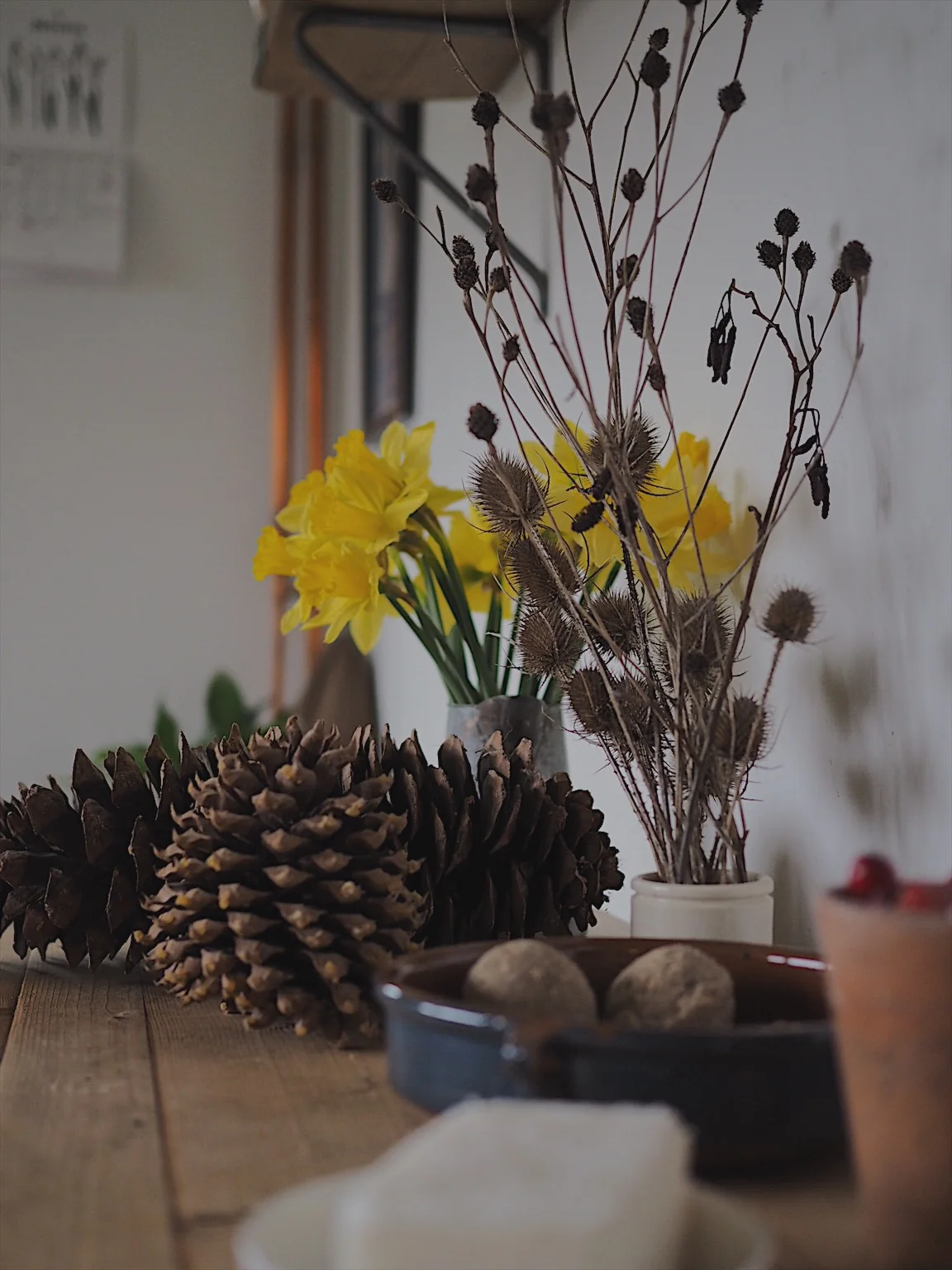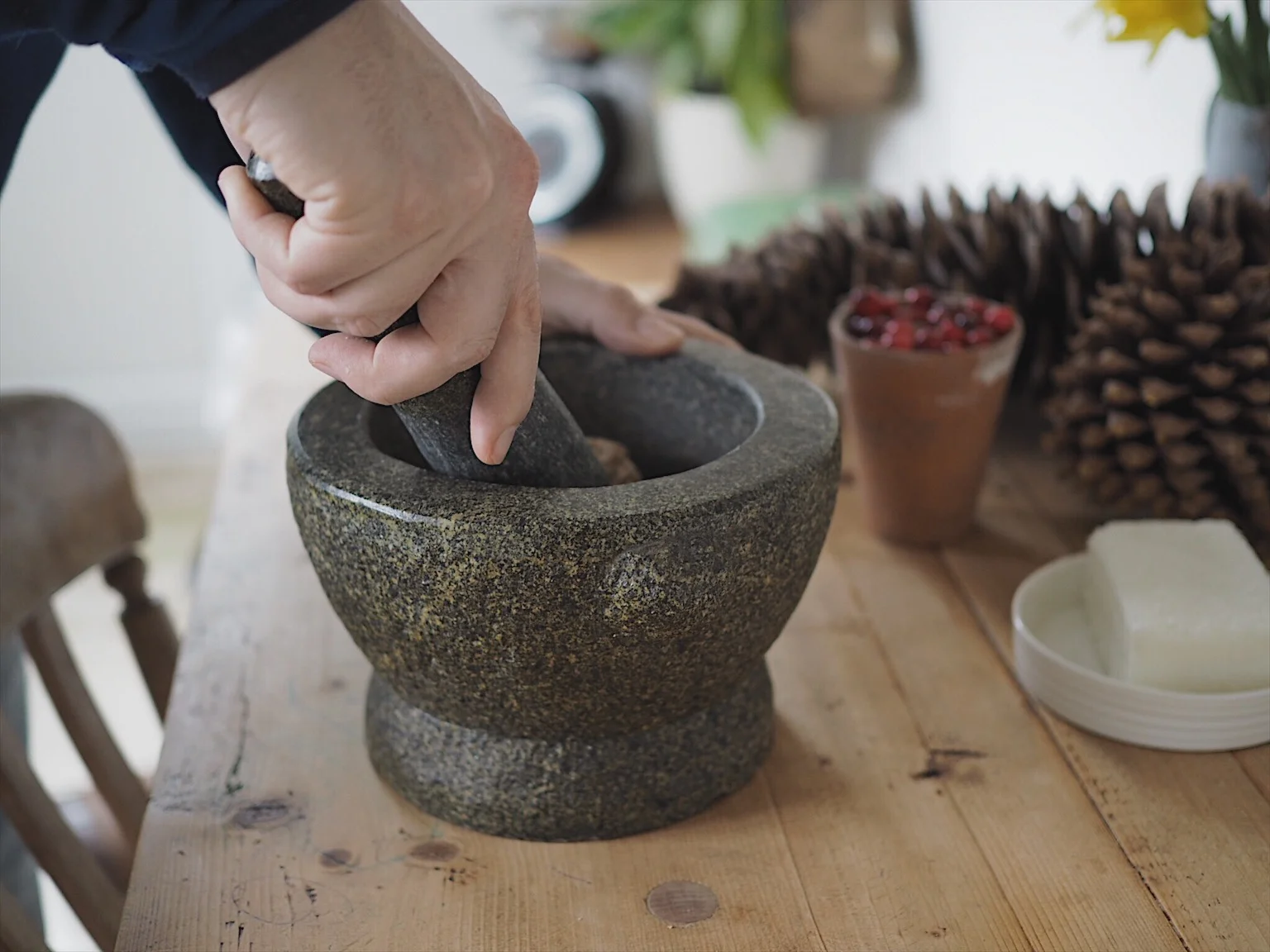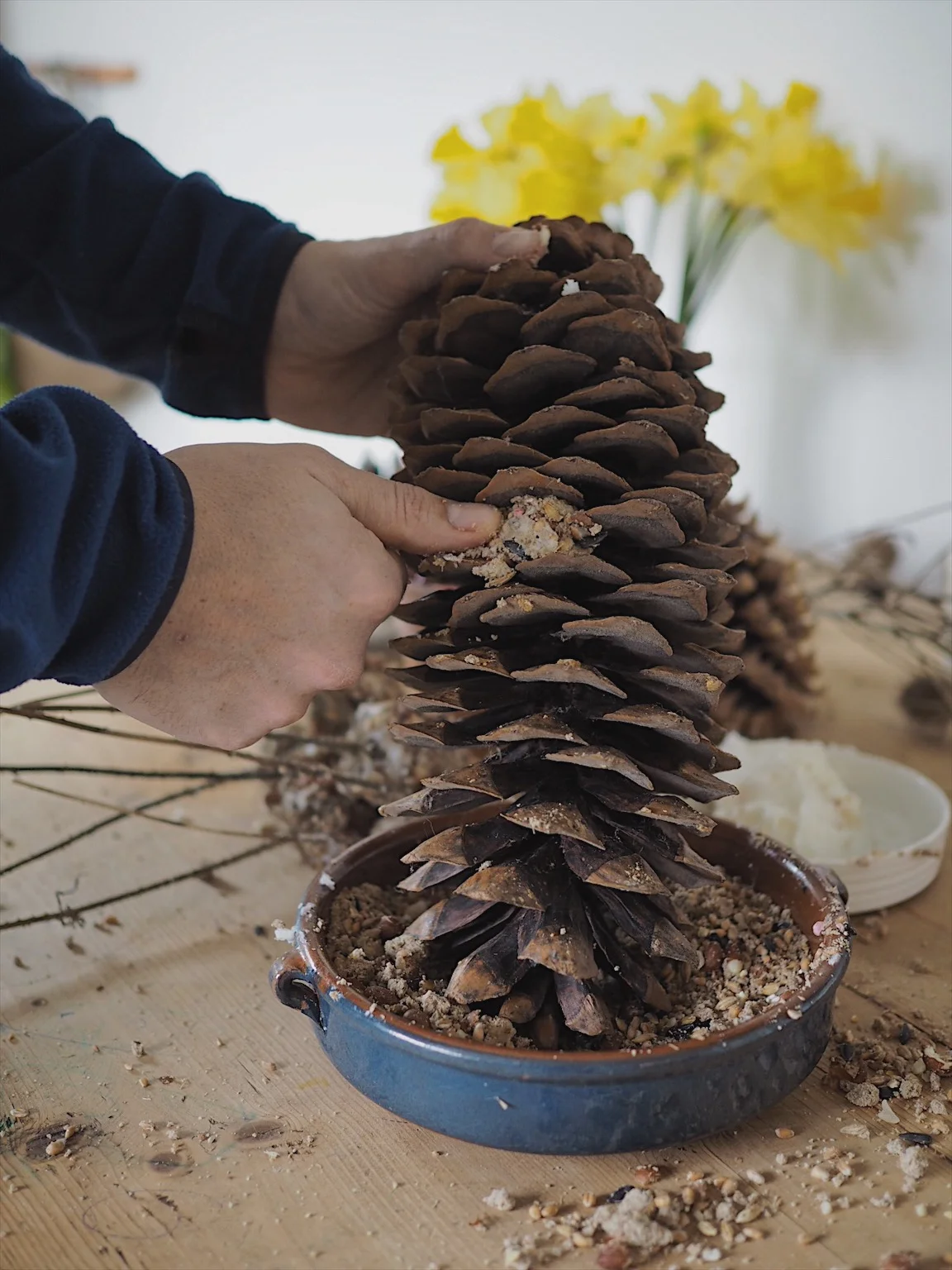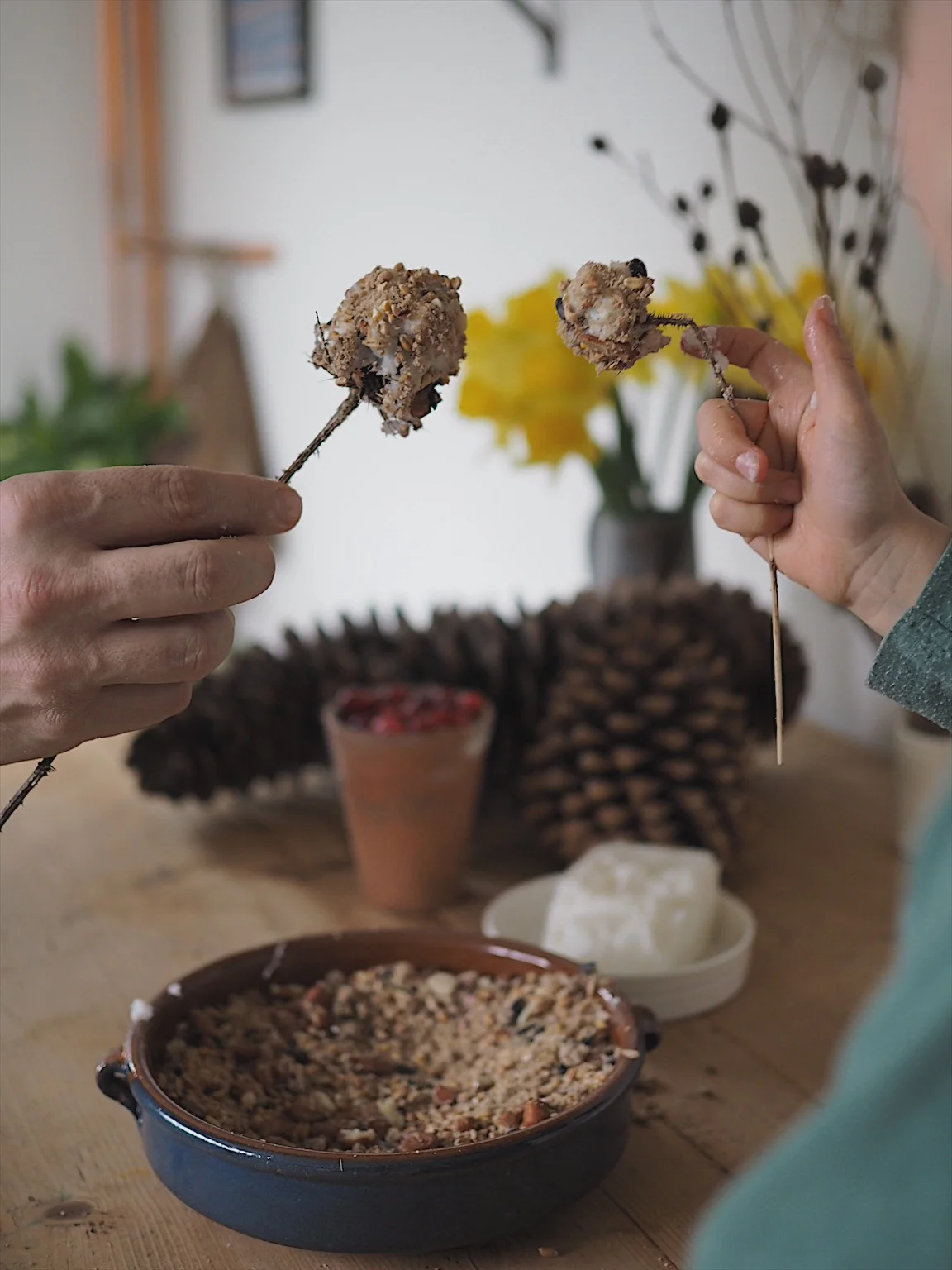A Mid Winter Treat for the Birds
So I guess it is about time that I said hello and introduce myself properly. I know Bex occasionally mentions me (as the third man in her life), but I wanted to tell you a little bit about me and also talk you through a fun family activity I did with Henry this weekend inspired by the RSPB’s Big Garden Bird Watch (between the 27th and 29th of January).
Bex and I both share a great love for nature, wildlife and the outdoors, which is probably why I tolerate her brining so much of it into our house and hanging it everywhere! I have loved animals and wildlife for as long as I can remember and perhaps it is fate that I became an Ecologist and now work for WWF.
At weekends I love heading out to the woods to forage with Bex, she will be searching for foliage for her wreaths and I will be looking for mushrooms or stuck in a hedge somewhere picking blackberries but always bird watching. We spend as much time in the garden as possible, although I have very little say in this area and we are guaranteed to argue over spuds or cutting flowers at our allotment. But, there is a time or year however, when we are in agreement and our skills combine and that is at Christmas when we usually make a Christmas wreath for the garden birds and hang it out in the garden. This is a simple activity to do with the kids that was recommended to me via the Surrey Wildlife Trust, as a festive way to attract birds to your garden during winter when food is often scarce.
Unfortunately this year we didn’t get a chance to make a Christmas wreath for the birds as Bex was swamped with wreath orders via Folksy. But when Bex’s Mum (Jane) came to visit this week I had a moment of inspiration. Jane had brought me 5 or 6 giant cones, most likely Coulter pine or sugar pine from California.
So here is my idea for creating a giant cone bird feeder with teasel lollipops. Kids will love helping as they can get their hands all messy!
What you will need:
· A giant fir cone (these can be purchased online or often at garden centres)
· Raffia
· Lard
· RSPB approved bird seed
· Peanuts
· 2 x RSPB fat balls
· Cranberries
· Dried teasel heads
(You could also use raisins (but be careful if you have dogs as they can be poisonous), grated cheese and suet)
1. Allow the lard to warm to room temperature.
Crush up the fat balls
2. Meanwhile crush up the fat balls and peanuts using a pestle and mortar (the end of a rolling pin and bowl work just as well) and add them with the seeds into a mixing bowl. Mix everything together with your fingers (this is the bit kids love) until it becomes like a bird food crumble.
Crumbly mixture
3. Once the lard has softened break off a small piece with your fingers and roll it into a ball about the size of a 10 pence coin. Then roll and knead it through the bird food crumble you have just made so that all the seeds, peanut pieces and fat ball crumbs stick to the lard ball until it is completely covered.
Fill the gaps with the lard and seed mixtures
4. Then push the covered lard ball in to the gaps where the pine cone seeds once were. Repeat this until much of the pine cone is covered.
5. Next push in the cranberries in between the remaining gaps. Our cranberries were left over from Christmas. The birds love them and they add a nice touch of colour which will also help attract birds to the feeder.
6. Once the feeder is full tie some raffia to one end and find a suitable place to hang it in the garden. The most important factors to consider when choosing the best bird feeder placement are those that affect how the birds will see and use the feeder. If the birds do not find the feeder placement comfortable, safe or convenient, they will not use it as frequently. Therefore when placing bird feeders in your garden, keep these considerations in mind:
a. Natural Feeding: The best place to put a feeder will simulate a bird's natural feeding preferences.
b. Activity: Feeders in quiet, less disturbed areas generally do better than feeders placed near active areas such as a play structure, garage door or patio. While birds can become accustomed to some noise and activity, many species prefer a quieter area for feeding.
c. Safety: Birds will not visit a feeder in an unsafe area. Position bird feeders close to suitable shelter such as trees, hedges, brush piles or shrubs to give birds a safe, fast retreat whenever a predator is nearby. We often get sparrow hawks in our garden.
7. For the teasel lollipops, take a dried teasel heads and rub lard all over it until it is covered. Take care doing this (particularly with children) or wear gloves as teasel is often quite prickly. Then following the same principle as before roll it through the bird food crumble until it is covered. Pop a cranberry on the top and repeat until you have 6 – 8 lollipops.
Lard covered teasle heads
8. I placed these in a number of different places to account for the different natural feeding preferences of bird species. For example, I placed one on a tree trunk for woodpeckers; I stuck two in the ground poking up for ground feeding birds like blackbirds and dunnocks and finally several in the hedge for the sparrows and tits.
Tasty Lollipops for the birds
Once the feeders are all out in the garden, you can sit back, relax and watch the birds come into your garden. If you have a spare hour this weekend then I highly recommend taking part in the RSPB’s Big Garden Bird Watch (27 – 29 January 2018). It is super simple, it only takes an hour and you can have a cuppa whilst you do it. There is still time to take part and to find out how to get involved visit the website here and download your free pack. #BigGardenBirdwatch
In situ - awaiting the birds!
I hope this inspires you to help the birds in your garden! And good luck with the bird watch….
Ed








